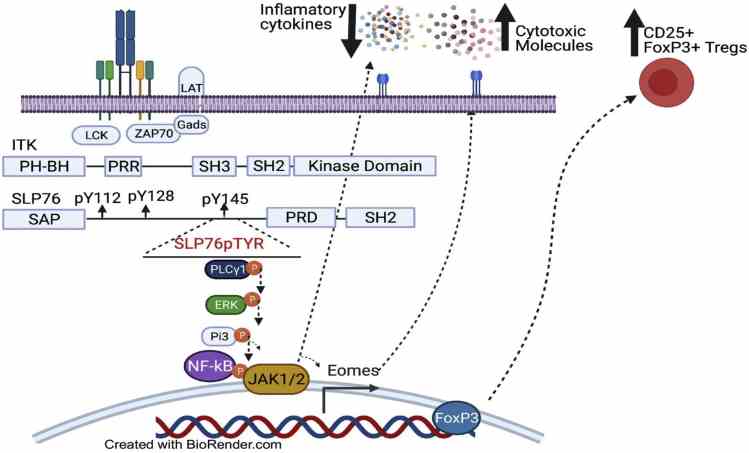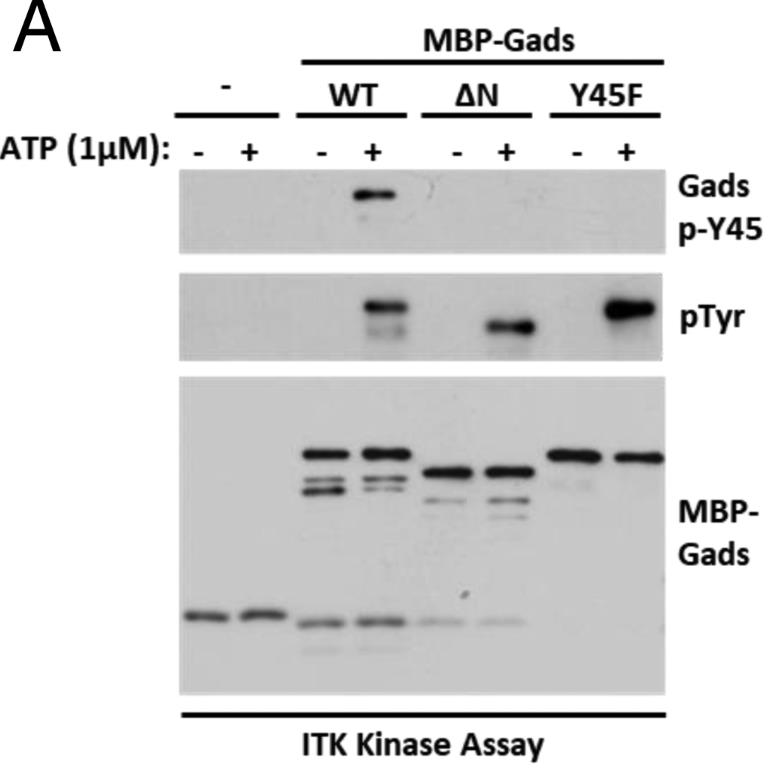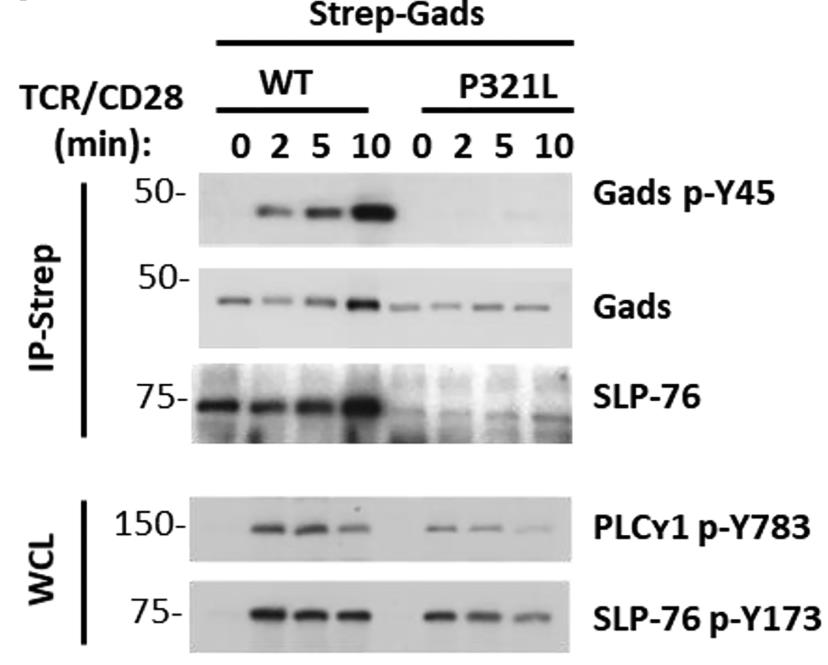ITK
-
Official Full Name
IL2-inducible T-cell kinase -
Overview
This gene encodes an intracellular tyrosine kinase expressed in T-cells. The protein contains both SH2 and SH3 domains which are often found in intracellular kinases. It is thought to play a role in T-cell proliferation and differentiation. -
Synonyms
ITK;IL2-inducible T-cell kinase;tyrosine-protein kinase ITK/TSK;EMT;LYK;PSCTK2;kinase EMT;T-cell-specific kinase;tyrosine-protein kinase LYK;IL-2-inducible T cell kinase;IL-2-inducible T-cell kinase;homolog of mouse T-cell itk/tsk;interleukin-
Recombinant Proteins
- Human
- Rhesus macaque
- Mouse
- Zebrafish
- E.coli
- Sf9 Cells
- Mammalian Cells
- Insect Cells
- HEK293
- Sf21 Cells
- Wheat Germ
- In Vitro Cell Free System
- His
- GST
- Non
- Flag
- Avi
- Fc
- DDK
- Myc
Background
What is ITK Protein?
Interleukin-2-inducible T-cell kinase (ITK) is part of the TEC family of tyrosine kinases, which play a big role in the immune system. ITK mainly hangs out in T-cells, where it's crucial for dealing with the signals when T-cell receptors get activated. This activation then helps T-cells decide whether to grow, survive, or even die. The kinase works through a bunch of protein-protein interactions and phosphorylation events. ITK's activity can affect immune response, and it's been linked to situations like infections, as well as more serious conditions like cancer and autoimmune diseases. Drugs targeting ITK are being explored to manage such disease conditions by regulating these immune responses.
What is the Function of ITK Protein?
The ITK protein, full name IL2-induced T cell kinase, is important for the function of the immune system, especially T cells. It is mainly distributed in T cells and is responsible for intracellular signaling, resulting from the activity of tyrosine kinases. Simply put, it helps transmit signals within these cells. With both SH2 and SH3 domains—parts of the protein structure that facilitate interactions with other cellular components—ITK is intricately involved in T-cell proliferation and differentiation. Essentially, it helps T-cells multiply and mature, which are critical processes for a robust immune response. ITK's role doesn't stop there; it's been observed to impact the body's response to infections and may even have implications in diseases like tuberculosis or in the functioning of T-cell lymphomas, among other conditions. This makes ITK a significant target for research and potential therapies related to immune system disorders and cancers.
ITK Related Signaling Pathway
Now, when it comes to ITK's role in signaling pathways, picture it as a vital part of the T-cell receptor (TCR) signaling setup. Basically, when something sets off the T-cells, ITK jumps in to help relay that signal inside the cell. This action happens through a series of interactions and phosphorylations, where ITK works closely with other proteins, like ZAP70 and PLC-gamma1, to kick off a cascade of events. These proteins get activated, swap signals, and eventually join forces to help release what's called second messengers. These messengers are vital because they help turn on key pathways, like NF-kB and PKC, and even mobilize calcium – all of which are crucial for T-cell function and response. So, ITK is kind of like a conductor in an orchestra, making sure everything is working in harmony to drive T-cell activities.
ITK Related Diseases
When it comes to diseases related to the ITK protein, one major condition is lymphoproliferative syndrome 1, which is pretty serious. This syndrome is linked to problems with T-cells, which are critical for our immune system. Mutations in the ITK gene can lead to faulty T-cell signaling, impacting their development and function. Such genetic changes can make people more vulnerable to infections, and sometimes lead to autoimmune issues or even lymphomas. While these problems might sound complex, they underscore how crucial ITK is for keeping our immune responses in check.

Fig1. Targeting SLP76:ITK interaction a with a novel and specific inhibitors has a therapeutic potential. (Samuel Weeks, 2021)
Bioapplications of ITK
Recombinant ITK protein is pretty handy in research and industrial settings. In the lab, scientists often use it to understand how T-cells work, especially since ITK plays a big role in immune signaling. By studying ITK, researchers can get insights into various immune disorders and potentially find new treatment angles. In the biotech industry, recombinant ITK can be used in testing processes to develop medications that might target or influence the immune response, ensuring drugs work as intended in modulating immune pathways. It's also used in assays that screen for molecular interactions, which is crucial for drug discovery and development. So, in short, this protein acts like a tool for both figuring out how immune cells talk to each other and creating therapies that can adjust those conversations when something goes wrong.
Case Study
Case Study 1: Sami Mamand, 2018
Folks dealing with peripheral T-cell lymphomas don't usually see great results with regular chemotherapy. Lately, it's become clear that quite a few of these are actually coming from follicular helper T-cells, showing a unique gene expression pattern, especially with high levels of ITK protein. ITK is important for making sure T-cells work right. We've looked into four different ITK inhibitors and compared them. We checked out how they affect apoptosis, signaling molecule phosphorylation, calcium flux, and cell movement. Some, like ONO7790500 and BMS509744, didn't mess with MEK1/2 or AKT phosphorylation, unlike ibrutinib and PF-06465469, which did. While the inhibitors alone didn't do much for apoptosis, they worked really well with drugs like doxorubicin. Plus, they slowed down Jurkat cell movement caused by CXCL12, and adding plerixafor made this effect even stronger.

Fig1. Westerns of lysates from Jurkat, MOLT4, CCRF CEM and K299 showing expression of ITK and phosphorylated ITK (p-ITK) at baseline and following treatment with ITK inhibitors.

Fig2. Calcium flux changes in response to ITKi.
Case Study 2: Enas Hallumi, 2021
CD28 teams up with the TCR to boost IL-2 production, cell survival, and proliferation, though their interdependence is still unclear. TCR activation involves adaptor proteins like Gads, LAT, and SLP-76 forming a signaling complex, with Itk phosphorylating specific sites. We've discovered Itk-driven phosphorylation at Gads Y45, crucial for TCR/CD28-induced RE/AP activation from the IL-2 promoter. This process requires Gads' interaction with SLP-76 and binding to phospho-LAT. Specific phosphorylations in SLP-76 were essential for triggering c-Rel activation but not NFAT. Interestingly, unphosphorylated Gads can inhibit RE/AP activity, which changes upon dimerization and phosphorylation.

Fig3. In vitro phosphorylation of Gads Y45 by Itk.

Fig4. The Gads–SLP-76 interaction targets Itk activity to Gads.
Quality Guarantee
High Purity
.jpg)
Fig1. SDS-PAGE (ITK-114H)
.
.jpg)
Fig2. SDS-PAGE (ITK-2227H)
Involved Pathway
ITK involved in several pathways and played different roles in them. We selected most pathways ITK participated on our site, such as Adaptive Immune System,B Cell Receptor Signaling Pathway,Chemokine signaling pathway, which may be useful for your reference. Also, other proteins which involved in the same pathway with ITK were listed below. Creative BioMart supplied nearly all the proteins listed, you can search them on our site.
| Pathway Name | Pathway Related Protein |
|---|---|
| Fc epsilon receptor (FCERI) signaling | LCP2A,RASGRP2,LAT2,GRAP2A,TAB1,GRAP2B |
| Generation of second messenger molecules | HLA-DQB2,EVL,GRAP2A,GRAP2B |
| Chemokine signaling pathway | CCL3L3,CCL19,STAT5B,RAC1,CXCL13,GNGT1,IL-8,CCR8,AKT2,WASL |
| Adaptive Immune System | CRTAM,FGFR1B,KLRB1B,FGF8B,ASB6,CXADR,LRRC41,KIR2DS2,CLTC,SIGLEC7 |
| B Cell Receptor Signaling Pathway | GRB2,ARPC5,DOK1B,VAV3,BANK1,cgr2b,ARPC4,NFATC1,CARD11,BCL10 |
| Fc-epsilon receptor I signaling in mast cells | PTPN13,S1PR1,DOK1,LAT2 |
| Class I PI3K signaling events | BLK,PLEKHA1,ARF1,ADAP1 |
| FCERI mediated Ca+2 mobilization | GRAP2B,LCP2A,IGLC2,IGKV1-5,IGKC,GRAP2A |
Protein Function
ITK has several biochemical functions, for example, ATP binding,metal ion binding,non-membrane spanning protein tyrosine kinase activity. Some of the functions are cooperated with other proteins, some of the functions could acted by ITK itself. We selected most functions ITK had, and list some proteins which have the same functions with ITK. You can find most of the proteins on our site.
| Function | Related Protein |
|---|---|
| ATP binding | GSK3B,ABCG2A,RFC2,CLCN4-2,UBE2N,CKBA,ABCB6,TOR1B,P2RY2,SUCLG2 |
| protein binding | FBXO44,BLNK,MPP2,PFKL,CCL20,NAA35,COL23A1,GEMIN8,NKD2,SMARCC2 |
| metal ion binding | LHX8A,ARSI,ZNF800B,LMX1BA,ALKBH6,ATF7B,ZBTB8B,RAD50,ZBTB2B,DNAJA4 |
| non-membrane spanning protein tyrosine kinase activity | PTK2,PTK2AA,PTK6B,BAZ1B,Fert2,FRK,YRK,SRMS,TXK,EIF2AK2 |
| NOT receptor binding | BMX,TXK,TEC,LGI1,STYK1,BTK |
Interacting Protein
ITK has direct interactions with proteins and molecules. Those interactions were detected by several methods such as yeast two hybrid, co-IP, pull-down and so on. We selected proteins and molecules interacted with ITK here. Most of them are supplied by our site. Hope this information will be useful for your research of ITK.
LCP2;FASLG;ERBB2;MET;ERBB3;SPRR2A;GAB1;ABI1;IKBKG;HSP90AB1;WAS;G3BP1;EGFR;npm_alk
Resources
Related Services
Related Products
References
- Sagiv-Barfi, I; Kohrt, HEK; et al. Therapeutic antitumor immunity by checkpoint blockade is enhanced by ibrutinib, an inhibitor of both BTK and ITK. PROCEEDINGS OF THE NATIONAL ACADEMY OF SCIENCES OF THE UNITED STATES OF AMERICA 112:E966-E972(2015).
- Bansal, Y; Silakari, O; et al. 2-Aminobenzimidazole conjugates of NSAIDS: novel compounds with immunomodulatory, anti-inflammatory and antioxidant actions. MEDICINAL CHEMISTRY RESEARCH 24:1170-1179(2015).


